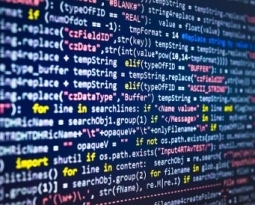Wyoming Patent of the Month – January 2021
Industrial robots that are required to grasp parts are built with end effectors. These parts are designed to match the part they will be grasping. The robot is programmed with the appropriate force and grip strength to apply for that part. But if the robot needs to handle different types of parts it gets more complicated. Some companies use multiple end effectors and change them between production steps, but this is still limited. If a robot is needed in an unstructured environment, it has to be able to grasp a variety of objects. The end effector must be versatile and the programming must be adaptable. These versatile end effectors are called robotic hands. Robotic hands have two theoretical grasp types – palm and precision. Palm grasps are used for secure grasps or for grasping heavy objects. Precision grasps are used for delicate handling or manipulation but lack strength and force. Strider Labs, Inc. has developed a system to program effective palm grasps with a robotic hand.
To develop a working palm grasp, the robotic hand must be able to compute the required contact locations based on object shape and weight. The robotic hand would acquire a description of the surface and shape, then select a grasp configuration from a database. The robotic hand’s computational power would check the ability of this position to support the object and compare against other grasp positions. Following this, the optimal grasp pose is selected and implemented. This system considers the different attributes a robotic hand could have – for instance the number of fingers and their available motions. The pose might use all or only some of the available fingers. Strider Labs also considered how to increase the variations in grasp pose by suggesting a moveable palm. A palm that can change placement and orientation has more grasp possibilities. While selecting the grasp pose, the robotic hand calculates the required force application to ensure it does not damage the object or itself. Smart responsive robotic hands like this bring us closer to an automated world but can also extend into other fields – like prosthetics.
Are you adapting existing technology for a new application? Did you know your development work could be eligible for the R&D Tax Credit and you can receive up to 14% back on your expenses? Even if your development isn’t successful your work may still qualify for R&D credits (i.e. you don’t need to have a patent to qualify). To find out more, please contact a Swanson Reed R&D Specialist today or check out our free online eligibility test.
Who We Are:
Swanson Reed is one of the U.S.’ largest Specialist R&D tax advisory firms. We manage all facets of the R&D tax credit program, from claim preparation and audit compliance to claim disputes.
Swanson Reed regularly hosts free webinars and provides free IRS CE and CPE credits for CPAs. For more information please visit us at www.swansonreed.com/webinars or contact your usual Swanson Reed representative.

















